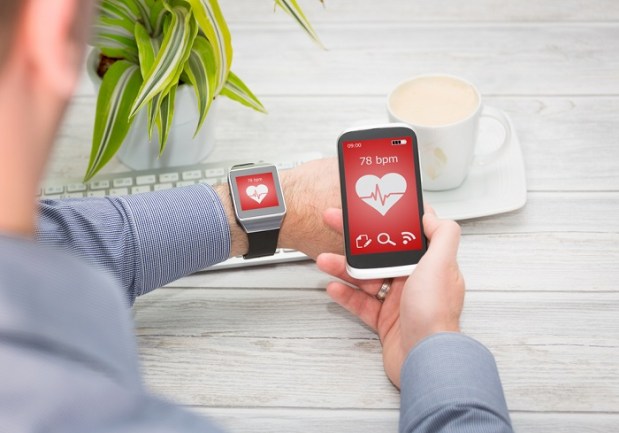Getting Intimate With IoT

The Internet of Things and every expert in its corner have promised a lot of things over the years — autonomous shipping networks, self-driving vehicles, efficient smart homes and more. And while it’s true that the imminent IoT revolution could unlock the answers to more efficient business, there’s another inscrutable enigma that IoT might one day turn into server farms full of quantifiable data: the human heart.
BuzzFeed reported on a peculiar episode that played out Saturday (Jan. 17) for Koby Soto, a 28-year-old law student in Israel. Soto told BuzzFeed that he was going about his day as he normally would with his Fitbit Charge HR strapped to his wrist when his boyfriend called around noon with some bad news: he and Soto were over.
“I said, ‘Are you serious?'” Soto told BuzzFeed. “‘You’re doing this over the phone?’”
Soto went on to explain that he passed the rest of the day with friends in a post-breakup haze, so it wasn’t until that night when complaining to a friend of difficulty sleeping, Soto consulted his Fitbit app to prove to his friend how fast his heart was still racing. Alongside evidence of a still-elevated heart rate, Soto found something shocking in the data: the exact moment his boyfriend had broken his heart and sent its beats per minute skyrocketing (from an average of around 72 to 88) for the rest of the day.
It’s not really a surprise that breakups can get both the dumper and dumpee’s hearts racing, but that commonplace wearable devices can now translate a moment that has captivated romantics throughout centuries into quantifiable data shouldn’t be overlooked. For consumers like Soto, the benefit is at least knowing that what he felt was validated by the Fitbit’s sensors.
“I feel like it’s nice to have a log of your confirmation of what you felt,” Soto told BuzzFeed. “You can tell people you have heartbreak and you feel bad. People become less cynical once you show them the numbers or once you show the data or graphs. Everyone understands heartbreak, right? Everyone’s felt it. When you have this, it’s interesting — you have something to show.”
If all fitness trackers and other IoT wearables were good for was showing consumers readouts of their biometrics, they wouldn’t be much better than souped-up mood rings. However, the potential of knowing how customers are feeling at any given moment should excite retail marketers beyond their wildest dreams.
Some are already getting in on the business of therapy through wearable IoT devices. Forbes reported that Sentio Solutions, a Los Angeles-based wearables startup, was showing off its Feel device at CES 2016. Though still in prototype phase, Sentio Solutions claims that Feel can monitor wearers’ stress levels and, with some information on their dietary and exercise habits, offer advice on how to decompress after a trying day. The leather wristband can also vibrate when users’ heart rates go off the charts as a little reminder to take a few steps back and a few deep breaths.
Obviously, a world where marketers have instant, real-time access to consumers’ mental and emotional states is a bit of a fantasy – with the current frequency of breaches and hacks, it’s unlikely most people would want biometric evidence of their breakups and stressful work days falling into the wrong hands. That doesn’t mean there won’t be first adopters like Soto and others who welcome a new level of insight into their often enigmatic lives — and it’s these pioneers that device developers need to target unless they want to run afoul of privacy concerns and spoil their welcome before the time is right.
